
Report-out from the Venice Film Festival
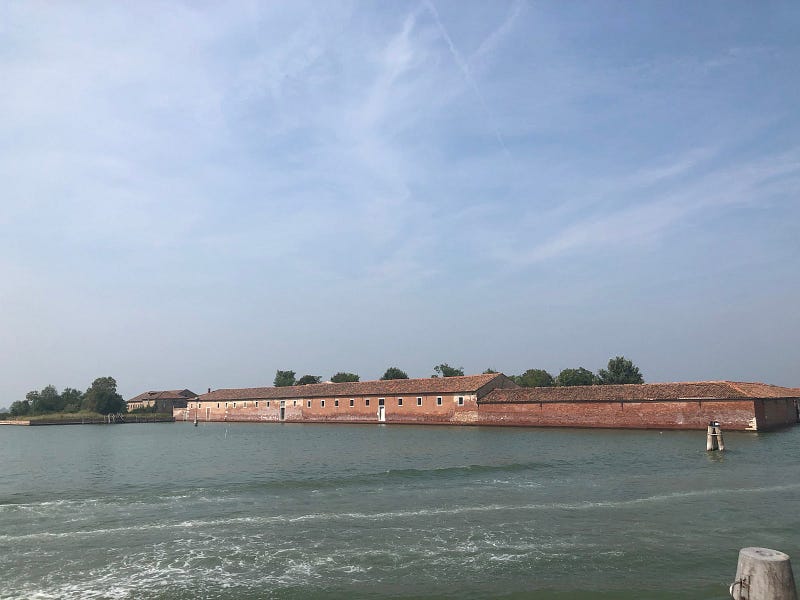
by Katerina Cizek
New technologies demand new ways of working, according to three Virtual Reality (VR) artists at the Venice Film Festival.
In August, the Co-Creation Studio discussed co-creativity with three VR artists in competition in the Virtual Reality program at the 76th Venice Film Festival. The panel,“Collective Wisdom on VR Island,” celebrated the launch of the studio’s new field study on co-creation by showcasing three very different approaches to co-creation exhibited at the festival. Together, the projects include collective practices across disciplines, within communities, within live performance, and with artificial intelligence.
“When you come to a new platform, you start rediscovering,” said Liz Rosenthal, co-curator of Venice VR, as she introduced the event. “You start inventing new ways to make this new work. It is such an incredible coming together of different disciplines — games makers, visual artists, live performance, artists, psychologists. Creating new media forces you into this situation. It’s a really amazing way to rediscover how working with other people can create incredible stories.”
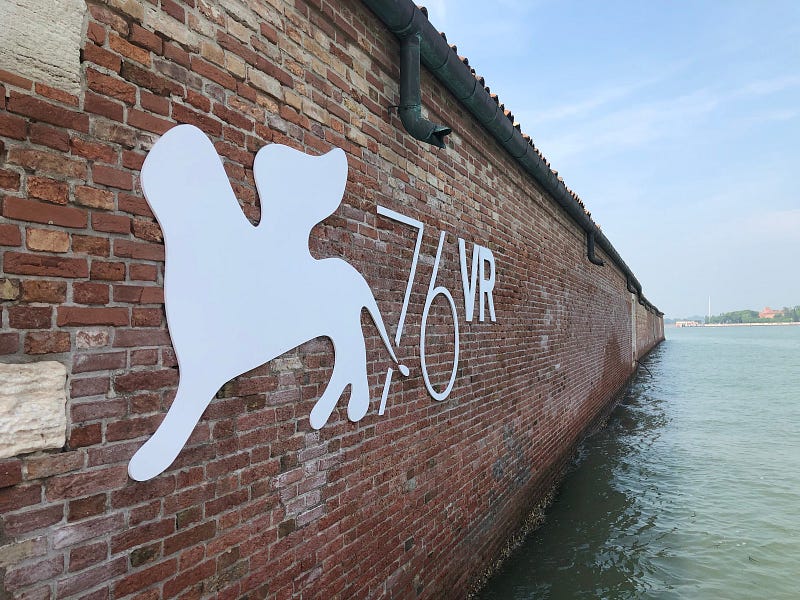
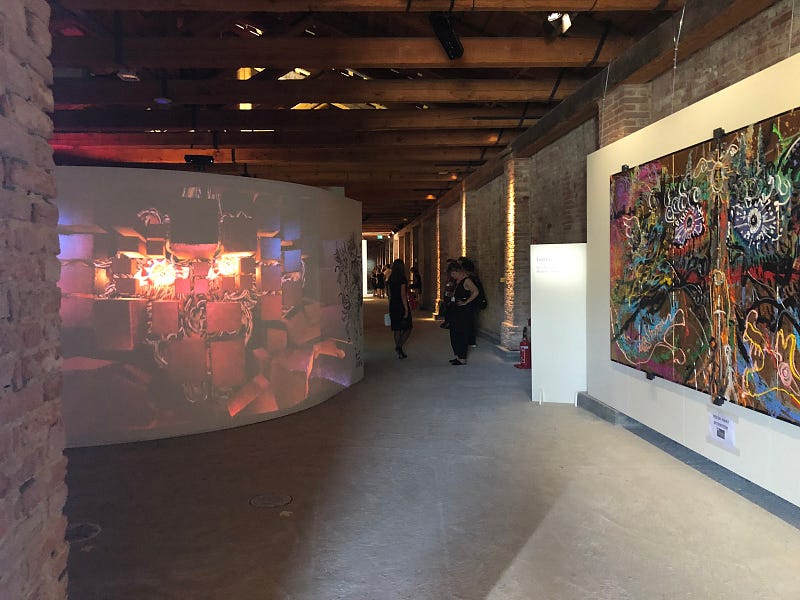
The 76th Venice International Film Festival was organized by La Biennale di Venezia on Venice Lido island. Venice VR Island, in its third year, showed 39 works of virtual reality, co-programmed by Rosenthal and Michel Reilhac. The exhibition space is located on Lazzaretto Vecchio, a small island less than 50 meters from the Lido. This abandoned island used to be a quarantine transit island for victims of the plague between the 15th and 17th century. About a decade ago, the hospital and the adjoining buildings on the island were partly renovated to house a future Museum of Archeology, which has not materialized to date. Now, Lazzaretto Vecchio has found a new purpose in the Venice VR program of the festival.
The repurposed island, now housing the spectacular exhibit, is in itself a metaphor for co-creation, the notion that these collective approaches are in fact not new, but ancient, and have been rewired for our current needs and times.
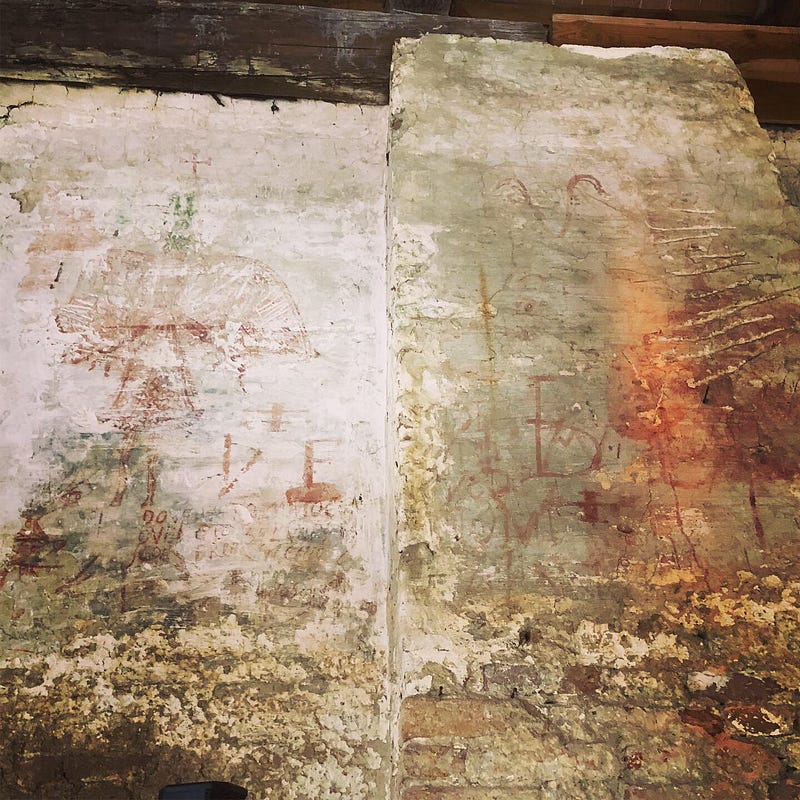 “If you look around, you’ll see
symbols drawn on the walls,” said Katerina Cizek of Co-Creation Studio
“If you look around, you’ll see
symbols drawn on the walls,” said Katerina Cizek of Co-Creation Studio

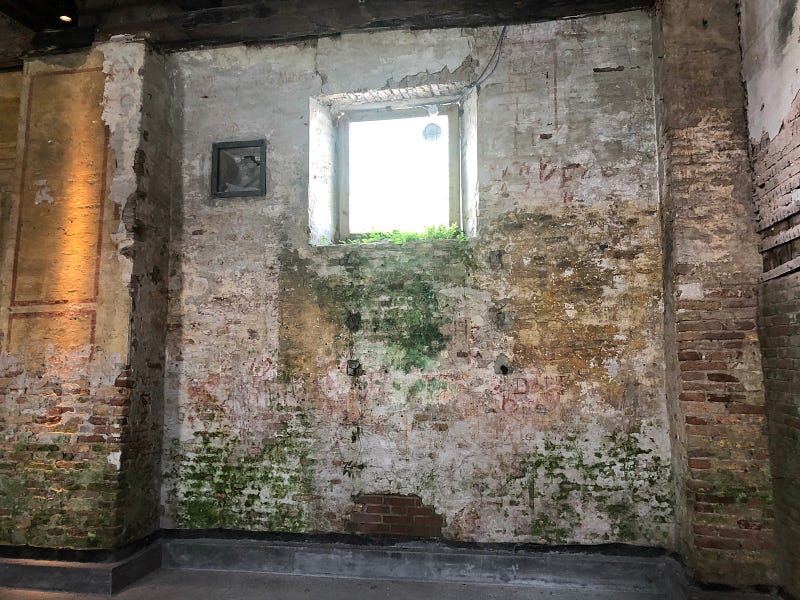
“If you look around, you’ll see symbols drawn on the walls,” said Katerina Cizek of Co-Creation Studio at MIT Open Doc Lab, moderator of the panel, and author of the new Collective Wisdom study, with William Uricchio et al. “The markings are etchings from the victims of the plague who had their last days in this space. In this space, we also have the most avant garde selection of VR projects from around the globe. We think we’re inventing immersion. We’re actually just reinventing. The tech, the ideas, the roles that we’re creating have come around before. Collective wisdom. Everywhere we stand, someone has stood before us. This new technology is helping us to go back to some of reflective practices that we had in the past, the search for meaning.”
Cizek began by defining co-creation as it emerged from the interviews in the field study published by MIT Press’s PubPub platform. She cited one of the 166 people interviewed for the study, Opeyemi Olukemi, from PBS, the Executive Producer of POV Spark and Vice President, Interactive at American Documentary:
Co-creation is the ability for people to humble themselves and let their guard down. To create something that they cannot do themselves. Co-creation to me is the attempt to reach this whole mind state where people also understand that everyone has a piece of the collective puzzle. And jointly, only jointly, can we create something that’s truly revolutionary and meaningful.
The panel began with Céline Tricart, director of The Key — who later won the Grand Jury Prize for Best VR immersive Work at The Festival. Tricart revealed the tensions and rewards of co-creating between an artist and a non-profit organization, thanks to matching by a program called Oculus VR for Good.
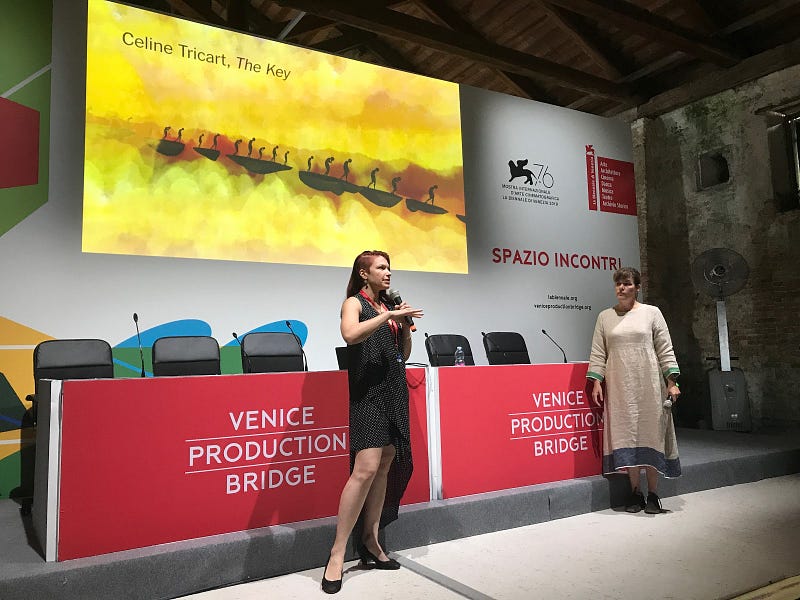
<pic of THE KEY> <pic of Celine>
While very honoured to be selected for VR for Good, Tricart admitted that at first, “When I was paired with this non-profit, to be very, very honest, I was really bored and annoyed, because it was a humanitarian subject that I had worked on a lot. And there have been a lot of stories in VR about this subject in the past five years. And so I just didn’t want to do another one.”
But through a co-creative process of deep listening, Tricart quickly found with her partner at the non-profit organization “the key” to a compelling and unusual, touching concept around which to weave the experience that ultimately became “The Key.” Tricart said, “I really wanted to do something more artistic and more creative. And I also had an open mind of saying, “Even though I think I know a lot about the subject, I need to listen to her stories and I need to listen to what she has to say.”
For Armando Kirwin, the second panelist, co-creation included working with humans across disciplines and non-human systems of artificial intelligence. For his VR experience A Life in Flowers, which is powered by the participant’s own voice, Kirwn worked with the renowned botanical sculptor Azuma Makoto (a human) as well as a (non-human) advanced machine-learning system. In the experience, participants enter into a conversation with Azuma using advanced artificial intelligence technology. As the conversation progresses, a unique bouquet of flowers forms based on each participant’s life.
 Photo of Armando Kirwin’s “A Life
in Flowers”
Photo of Armando Kirwin’s “A Life
in Flowers”According to Kirwin, his approach to AI and Makato’s approach to flowers are “similar because we’re both trying to explore kind of what it means to be alive. So Azuma Makoto is this incredible artist who uses flowers as a form of sculpture, and a lot of the themes that the piece deals with, even when it’s talking about self-worth, it’s actually talking about your life. And it’s talking about life in general. And he uses flowers as his vehicle for growth and battling all of these demons. And we combined his expertise in these things and then using flowers with the AI, which is essentially trying to pull information out of you as an audience member, and make you reflect on your own life in real time.”
Deep co-creation relies on respecting each others’ expertise, in this case, knowledge about flowers and artificial intelligence. “This was truly co-creative because I don’t think either one of us could possibly have predicted where it ended up,” Kirwin said. “And the hardest part, really, was not the AI. The hardest part was actually writing without being too pedantic. So we worked on the writing for a long time, and that was the part that we probably iterated on the most, actually.”
The third director on the panel also co-created on multiple layers. Kiira Benzing brought to VR Island a theater VR experience newly developed for Venice, performed simultaneously with virtual and real-world audiences. Fifty or so gathered every evening during the festival for a live performance, called Loveseat. Benzing co-created with writers, programmers, and actors within the principles of the live performance and theatre worlds, which was Benzing’s background before moving into documentary and VR. In Loveseat, the experience happens in the real world and a virtual one in real time.
She explains, “We’re performing in a co-creative space while doing a very co-creative production in two places at the same time. So when you talk about this third space (of co-creation), I feel like we’re probably in there. So we’re as much in discovery about how this works in the virtual social world. We’re moving together.”
The ensuing discussions between the panelists and audience raised reasons for co-creation, including the climate crisis and navigating uncharted territories. Tricart and Cizek brought up the importance of rooting co-creation in equity and justice. One audience member had questions about intellectual property and who pays for co-creation. Panelists agreed that new rules need to be written, from funding models to ownership and governance issues — even at festivals, where there are limitations, for example, about crediting the work.
Sarah Wolozin, the director of MIT Open Documentary Lab and Co-Principal Investigator of the field study, closed the event when she said, “We think co-creation allows for a more just, equitable, inclusive processes. It is about deep listening and working with people from the beginning. There’s a lot going on in this world. We need systemic change, and it requires collective action to do it together.”
This article is part of Collective Wisdom, an Immerse series created in collaboration with Co-Creation Studio at MIT Open Documentary Lab. Immerse’s series features excerpts from MIT Open Documentary Lab’s larger field study — Collective Wisdom: Co-Creating Media within Communities, across Disciplines and with Algorithms — as well as bonus interviews and exclusive content.
Immerse is an initiative of the MIT Open DocLab and The Fledgling Fund, and it receives funding from Just Films | Ford Foundation and the MacArthur Foundation. IFP is our fiscal sponsor. Learn more here. We are committed to exploring and showcasing media projects that push the boundaries of media and tackle issues of social justice — and rely on friends like you to sustain ourselves and grow. Join us by making a gift today.